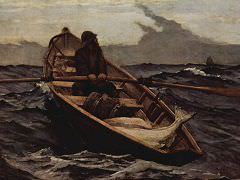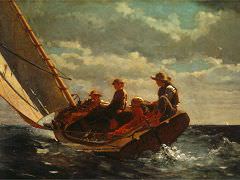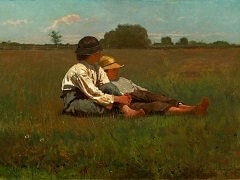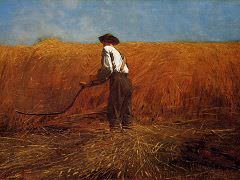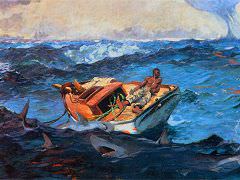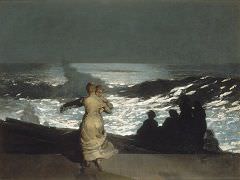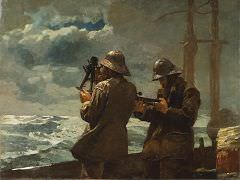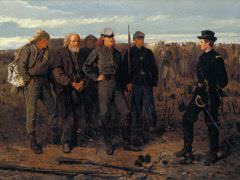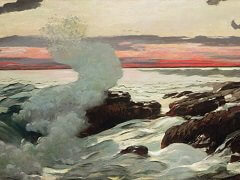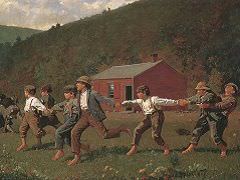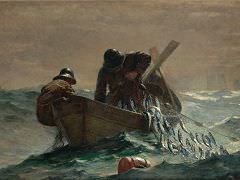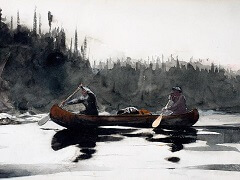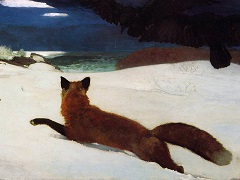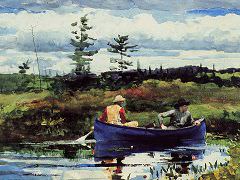Hound and Hunter, 1892 by Winslow Homer
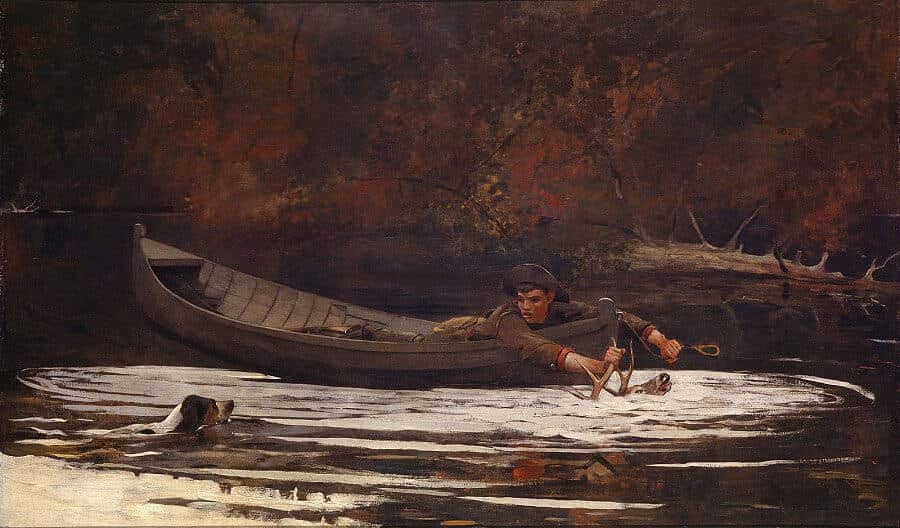
At age forty-seven, Homer settled in Prout's Neck, Maine. Always a silent bachelor who guarded his technical methods and personal beliefs, he became almost a recluse. When he left the coast of Maine, it was to fish or hunt in the Adirondack Mountains and Canada or the Caribbean Sea and Bermuda taking his watercolor supplies with him.
Homer's watercolor sketch for Hound and Hunter showed, lying behind the boy, a rifle that the artist later painted out. When this final canvas was exhibited in 1892, its subject was condemned as a cruel sport then practiced in the Adirondacks. Some viewers believed the youth was drowning the deer to save ammunition. The artist curtly responded, the critics may think that that deer is alive but he is not otherwise the boat and man would be knocked high and dry.
To clarify that the stag is already dead and no longer struggling, however, Homer did repaint the churning water to hide more of the animal. The hunter, therefore, simply ties up a heavy load, calling off the hound so it will not jump into the boat and swamp it.
Homer once asked a museum curator:
Did you notice the boys's hands' all sunburnt; the wrists somewhat sunburnt, but not as brown as his hands; and the bit of forearm where his sleeve is pulled back not sunburnt at all? I spent more than a week painting those hands."

